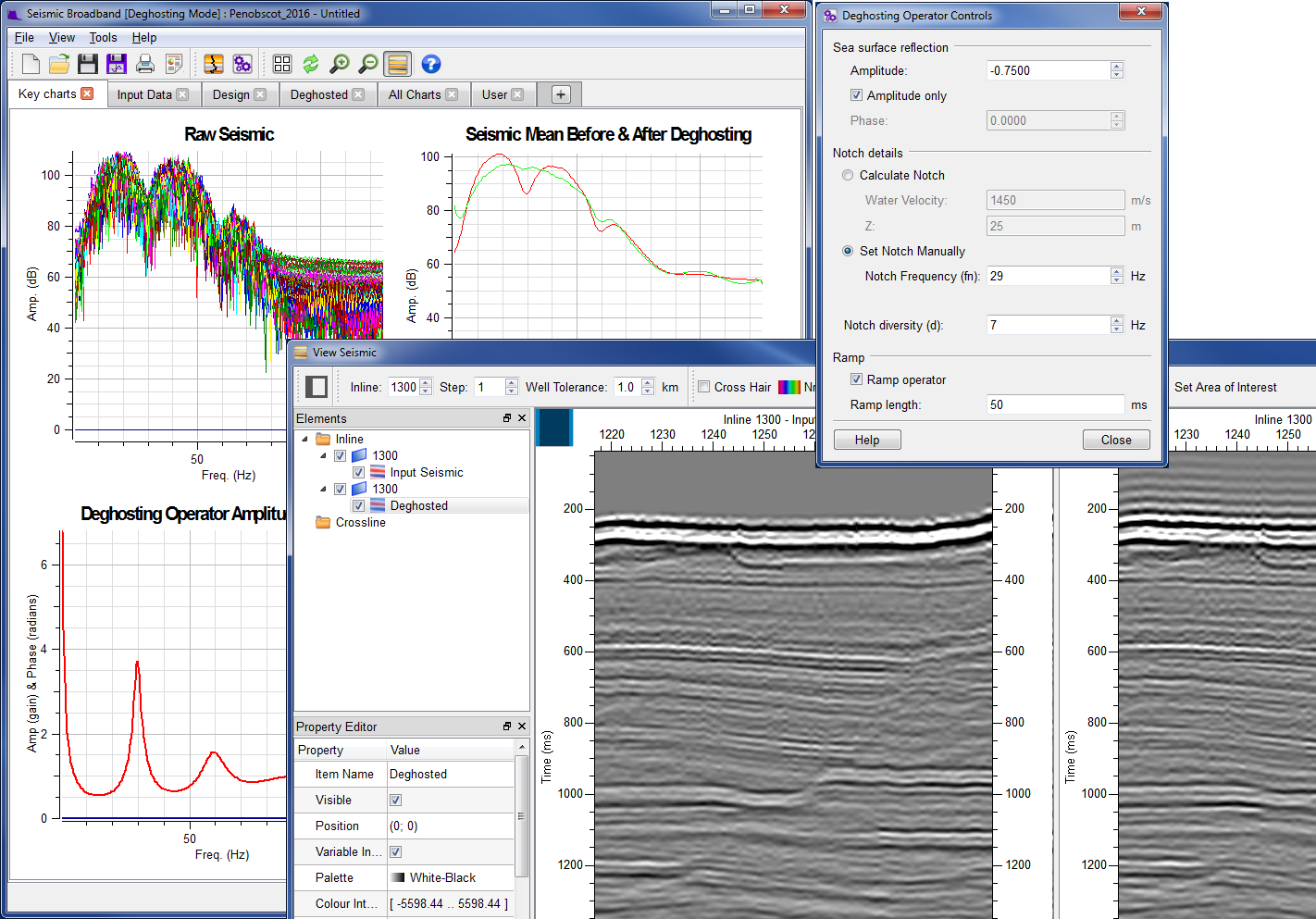Ghost reflections from the sea surface at both the source and receiver have always been a serious limitation to seismic bandwidth.
Stack Ghost Suppression (SGS) is a broadband processing tool that is designed to attenuate the sea-surface ghost reflection from post-stack reflectivity data using a 1D convolutional processs. The plug-in is fully interactive and intended to make the design of a de-ghosting operator a simple, fast and accurate process. For full details of the mathematical methods used by SGS please see the following paper by B. Moseley.
Ghost reflections are one of the commomest form of undesirable ray associated with marine data collection because the sea surface is an almost perfect reflector. Rays from the source can travel upwards before being reflected downwards towards the sea bed, both with sign reversal and with an increased travel time. Up-going rays can similarly be reflected from the sea suface, also with sign reversal and increased travel time before being recorded. These are in addition to the desirable direct down-going and up-going rays. So four sets of rays can be produced:-
Direct ray
Ghosted only at the source
Ghosted only at the receiver
Ghosted at the source and receiver
At the source when the reflected energy combines with the direct down-going energy the waveshape is changed and a ghost is created. The same thing happens at the receiver, which is often at at a different depth to the source, and a second notch is formed at a different frequency.
These ghosts (notches in the frequency spectrum) both make identification of the primary events problematic; they rob energy from them too making the job of the interpreter more challenging. Therefore a simple way to remove both source and receiver ghosts is very beneficial.
SGS attempts to remove ghosts caused by refections from the sea surface by convolving a 1D de-ghosting operator with post-stack reflectivity data. The optimal operator is found by using the interactive analysis tools in the application. The underlying assumption of this technique is that recoverable signal energy is recorded in the ghost notch. SGS can be used to suppress both the source and receiver ghosts.
The technique must be used on post-stack marine (this technique does not work on land data) reflectivity data where a sea-surface ghost effect is present. It should not be used on inverted volumes, or attribute volumes derived from reflectivity data. The ghost response is assumed to be uniform everywhere. SGS does not attempt to artificially extend the bandwidth of the data but instead suppresses ghost notches and recovesr signal in the notches thereby improving the overall data quality.
To attenuate the effect of the ghost, SGS convolves the stack data with a 1D deterministic de-ghosting operator. The user must design this operator interactively. SGS can be used to target both the source and the receiver ghost, in which case the plugin should be used twice.
NOTE: SGS does not try to extend the bandwith of your data artificially. It will only account for the geophysical effect of the ghost reflection and is a deterministic correction.
